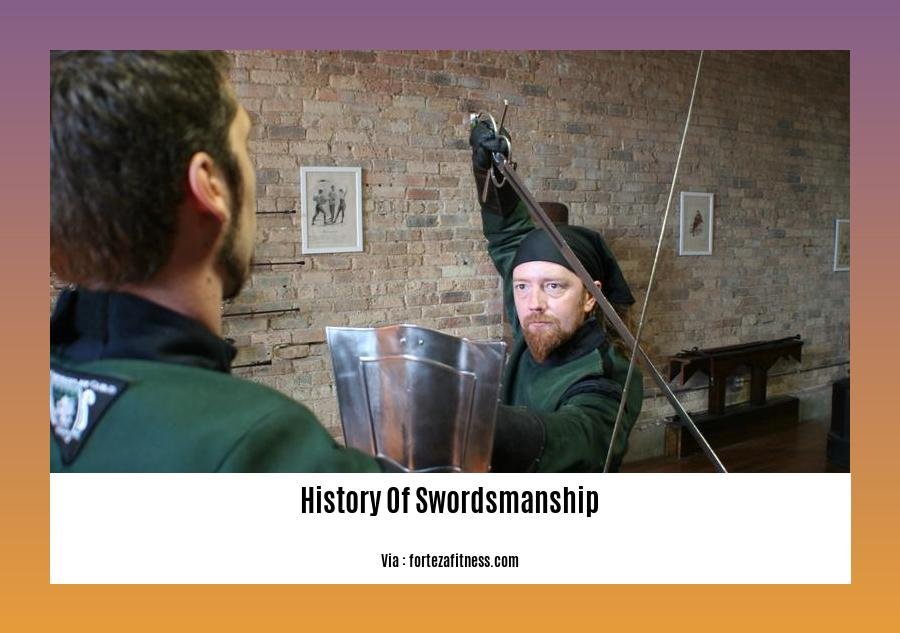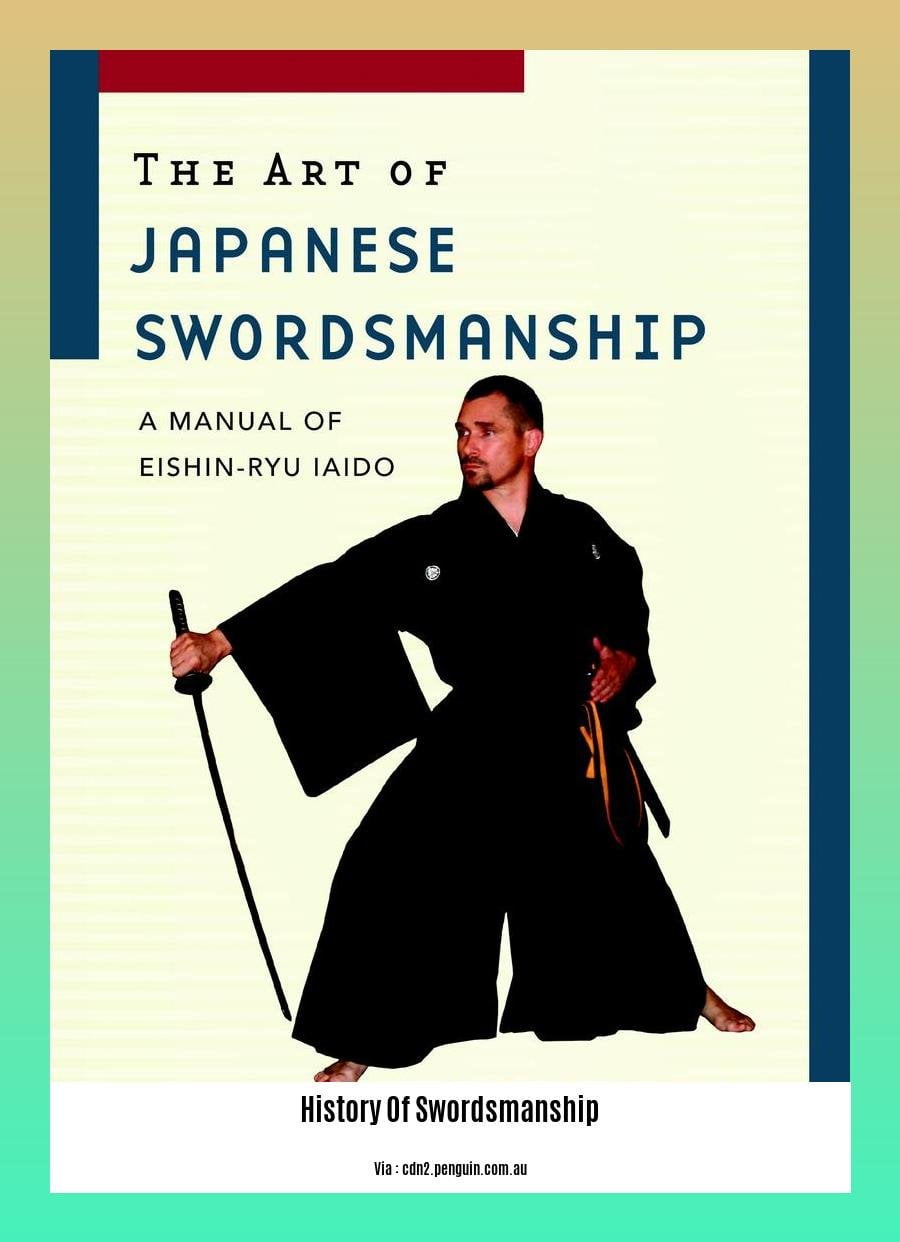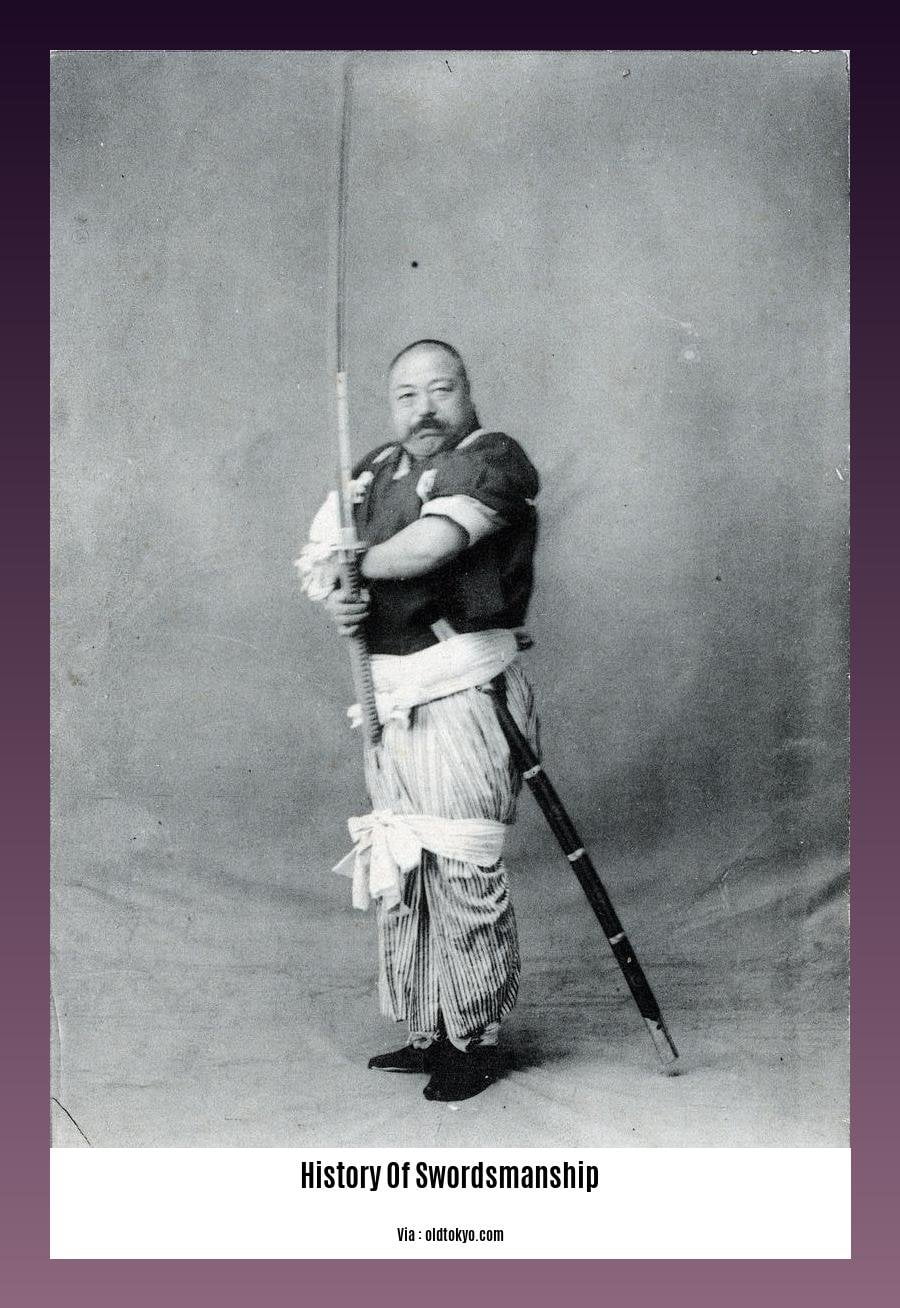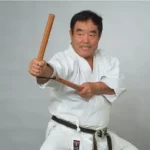Embark on a fascinating journey through time as we delve into [The History of Swordsmanship: A Historian’s Perspective]. Prepare to uncover the rich tapestry of martial prowess that has shaped cultures, influenced warfare strategies, and left an indelible mark on human history.
Key Takeaways:
Swordsmanship is the art of combat and training with swords.
Ancient Egypt, the Middle East, and China all had their own unique types of swords and swordsmanship techniques.
The Roman military used the gladius, a short thrusting sword, as the primary weapon.
The combat effectiveness of the Romans was greatly enhanced by the combination of the gladius and the scutum shield.
Swordsmanship techniques have become less prevalent due to guns but are still used in martial arts and historical reenactments.
“Swordsman” is a parallel to the Latin term “gladiator,” referring to professional fighters in ancient Rome.
Swordsmanship is a varied discipline with a variety of techniques and styles throughout the world.
History of Swordsmanship

Have you ever wondered about the history of swordsmanship? Let’s take a fascinating journey through time to explore this captivating martial art form.
Swords: A Double-Edged Legacy
Swords have played a pivotal role in human history, serving as both tools of combat and symbols of power. Their evolution from simple daggers to sophisticated blades reflects the ingenuity and craftsmanship of our ancestors.
Ancient Egypt: The Birthplace of Swordsmanship
The earliest evidence of swordsmanship can be traced back to ancient Egypt, where swords known as sfet, seft, or nakhtui date back an impressive 4,000 years. These early blades were crafted from bronze and used for both warfare and ceremonial purposes.
The Middle East: A Crucible of Innovation
In the Middle East, swords evolved from daggers and sickles, showcasing a diverse range of designs and materials, including copper, bronze, and iron. The region’s rich martial traditions influenced the development of various swordsmanship techniques, each tailored to specific combat situations.
China: The Art of the Blade
In China, swords hold a unique place among weapons, with a clear distinction between swords and other types of blades. Chinese swordsmanship is characterized by its emphasis on precision, fluidity, and elegance, reflecting the country’s deep cultural appreciation for martial arts.
Rome: The Gladius and the Scutum
The Roman military’s adoption of the gladius, a short thrusting sword, revolutionized ancient warfare. Paired with the scutum shield, the gladius proved devastatingly effective, allowing Roman legionaries to dominate the battlefields of the ancient world.
The Enduring Legacy of Swordsmanship
While the advent of firearms diminished the military importance of swordsmanship, it endured as a martial art and a means of preserving historical traditions. Today, swordsmanship is practiced worldwide, with various styles and techniques reflecting the diverse cultural heritage of this ancient art form.
In conclusion, the history of swordsmanship is a captivating tale of human ingenuity, martial prowess, and cultural evolution. From the bronze swords of ancient Egypt to the elegant blades of China, this rich and diverse tradition continues to captivate historians, martial artists, and enthusiasts alike.
Are you curious about how sustainable fashion came to be? Click here to explore the history of sustainable fashion.
Discover the fascinating origins of the Sylvanian Families in our comprehensive article about the history of Sylvanian families.
Tap your feet to the rhythm of history as you delve into the history of tap dance timeline, tracing its evolution from humble beginnings to a captivating global phenomenon.
Historical Sources and Analysis

Hunting for clues that can help you piece together the past can be as thrilling as the hunt itself. That’s what historical analysis is all about—digging through old texts, artifacts, and artworks, connecting the dots, and unraveling the mysteries of bygone eras. When it comes to swordsmanship, discovering its historical roots becomes an adventure of a lifetime.
Historical Sources
Tracing the lineage of swordsmanship requires traversing the vast landscape of historical sources. Let’s unpack some of the essential resources that historians rely on:
- Ancient Texts:
- Treatises on military strategy and combat techniques offer invaluable insights into the practices of ancient warriors. Think of them as manuals from the past, providing detailed descriptions of stances, strikes, and tactics used in swordsmanship.
- Archaeological Discoveries:
- Unearthing swords from archaeological sites is like finding frozen moments in time. These relics provide tangible evidence of the design, materials, and craftsmanship that went into creating these weapons. The discovery of training grounds and combat arenas adds another dimension to our understanding of how swordsmanship was practiced.
- Artistic Depictions:
- Art, in its many forms, often captured the essence of swordsmanship. Paintings, sculptures, and tapestries offer visual representations of combat techniques, allowing us to glimpse the movements and styles of past masters.
Analyzing the Evidence
Once the historical sources are gathered, the detective work begins:
- Textual Analysis:
- A close reading of ancient texts reveals tactical insights, from basic strikes to complex maneuvers. Scholars scrutinize terminology and cross-reference them with other historical texts to ensure accuracy and consistency.
- Material Analysis:
- Examining the physical properties of recovered swords provides information about their functionality and effectiveness. Metallurgical studies can determine the material composition, while wear patterns hint at the types of strikes and techniques that were employed.
- Comparative Analysis:
- Comparing sources across different cultures and time periods sheds light on the evolution and spread of swordsmanship techniques. Similarities and differences reveal the interconnectedness of martial traditions and the cross-pollination of ideas.
Putting the Pieces Together
Like solving a grand puzzle, historians piece together the information from these sources to reconstruct the history of swordsmanship:
- Timeline of Techniques:
- By analyzing sources chronologically, historians can trace the development of swordsmanship techniques over time. This helps identify turning points, innovations, and the gradual refinement of martial practices.
- Regional Variations:
- Geographical factors greatly influence the evolution of swordsmanship. Comparing techniques from different regions reveals the impact of terrain, climate, and cultural influences on martial traditions.
- Lineages and Schools:
- Identifying the lineages of swordsmanship masters and the schools they founded helps establish a historical thread that connects the past with the present. This knowledge is crucial in understanding the transmission of knowledge and the evolution of styles.
Key Takeaways:
- Historical sources for swordsmanship encompass ancient texts, archaeological discoveries, and artistic depictions.
- Analyzing these sources involves textual, material, and comparative analysis to reconstruct historical practices.
- The history of swordsmanship reveals a complex tapestry of techniques, lineages, and regional variations, shaped by time and geography.
References:
Swordsmanship – Wikipedia
The Secret History of the Sword: Adventures in Ancient Martial Arts
Hands-on Experience and Martial Arts
Swordsmanship, the venerable art of wielding a sword, transcends mere combat techniques; it’s a gateway to understanding history, culture, and the very essence of human conflict. From humble origins in ancient Egypt to its transformation into a refined martial art in the hands of samurai warriors, swordsmanship has left an indelible mark on the tapestry of human civilization.
My journey into the world of swordsmanship began as a wide-eyed history student, captivated by tales of legendary battles and the clash of steel. As I delved deeper into my studies, I realized that understanding the intricacies of swordsmanship required more than just poring over dusty tomes and deciphering ancient texts. I needed to experience the thrill of the blade in my hands, to feel the weight of a sword, and to understand how its design and craftsmanship influenced its usage.
That’s when I discovered the world of historical European Martial Arts (HEMA). Founded on the principles of hands-on experience, HEMA practitioners study and practice the techniques of medieval and Renaissance swordsmanship, using historically accurate replicas and protective gear.
Training in HEMA was a revelation. It transformed the theoretical knowledge I had acquired into a living, breathing skill. I learned how the subtle nuances of grip, footwork, and body mechanics could dramatically impact the effectiveness of a technique. I discovered the importance of timing, distance, and the ability to read your opponent’s intentions.
Beyond the physical aspects of swordsmanship, HEMA also provided a glimpse into the minds of the warriors of old. As I practiced the techniques described in ancient manuals, I could almost feel the determination, the fear, and the exhilaration that they must have experienced on the battlefield.
My hands-on experience in HEMA not only enriched my understanding of swordsmanship but also deepened my appreciation for the martial arts as a whole. I realized that the principles and techniques of swordsmanship were not limited to the battlefield; they could be applied to any martial art that involves the use of weapons.
Whether you’re a seasoned practitioner or a complete novice, I encourage you to explore the world of swordsmanship. It’s a journey that will challenge you physically, mentally, and emotionally. And who knows, you might just discover a hidden passion for the art of the sword.
Key Takeaways:
- Swordsmanship is not just a combat technique; it’s a gateway to understanding history, culture, and human conflict.
- Hands-on experience through historical European Martial Arts (HEMA) is essential for truly understanding the intricacies of swordsmanship.
- HEMA training provides insights into the physical, mental, and emotional aspects of swordsmanship.
- The principles and techniques of swordsmanship can be applied to other martial arts that involve weapons.
- Swordsmanship is a rewarding journey that can challenge and enrich your life.
Sources:
– Swordsmanship – Wikipedia
– Historical European Martial Arts
Preservation and Legacy of Historical Swordsmanship
Japanese swordsmanship, with its timeless traditions and refined techniques, stands as a testament to the enduring legacy of martial prowess. From the Heian period’s samurai to the Kamakura period’s specialized sword masters, the art of wielding a blade has been an integral part of Japanese culture for centuries.
Preserving the Legacy
The preservation of historical swordsmanship is crucial for understanding its evolution and impact on society. This requires a multifaceted approach:
Documenting Techniques: Cataloguing swordsmanship techniques through written manuals, illustrations, and videos helps preserve the knowledge for future generations.
Preserving Artifacts: Maintaining collections of historical swords, armor, and training equipment ensures the tangible legacy of swordsmanship remains accessible for study and appreciation.
Passing on Traditions: Encouraging the teaching and practice of historical swordsmanship styles keeps the art alive, allowing practitioners to connect with the past and pass on the traditions to future generations.
Enriching the Present
Beyond its historical significance, swordsmanship continues to enrich modern culture in various ways:
Martial Arts: Swordsmanship techniques influence modern martial arts like kendo and iaido, preserving the principles and skills of traditional swordsmanship in a contemporary context.
Historical Reenactment: Swordsmanship enthusiasts participate in reenactments and demonstrations, providing a glimpse into the past while keeping the art relevant in the present.
Cultural Heritage: The preservation of swordsmanship contributes to the preservation of cultural heritage, fostering a sense of national identity and pride in traditional martial arts.
Personal Development: Learning swordsmanship offers opportunities for personal growth, teaching practitioners about discipline, focus, and the pursuit of excellence.
Key Takeaways:
Preserving swordsmanship techniques through documentation, artifacts, and teaching ensures the legacy of the art for future generations.
Swordsmanship influences modern martial arts, keeping its principles and skills relevant in a contemporary context.
Historical reenactments and demonstrations provide a glimpse into the past while keeping swordsmanship engaging in the present.
Preserving swordsmanship contributes to cultural heritage, fostering a sense of national identity and pride in traditional martial arts.
Learning swordsmanship offers opportunities for personal growth, teaching practitioners about discipline, focus, and the pursuit of excellence.
Most Relevant Sources:
The History of Japanese Swordsmanship
The Evolution of Japanese Swordsmanship and Its Influence on Modern Martial Arts
FAQ
Q1: What is the origin of swordsmanship?
A1: Swordsmanship has ancient roots, dating back to ancient Egypt, where swords known as sfet, seft, or nakhtui were used. Bronze swords from this period date back approximately 4,000 years.
Q2: How did swordsmanship evolve in different cultures?
A2: Swordsmanship techniques have evolved differently in various cultures. In the Middle East, for example, swords evolved from daggers and sickles, utilizing materials like copper, bronze, and later iron. In contrast, in China, swords are distinguished from other weapons, and the Chinese language clearly differentiates between swords and other types of blades.
Q3: What were the characteristics of Roman swordsmanship?
A3: Roman swordsmanship was characterized by the use of the gladius, a short thrusting sword, effectively paired with the scutum shield. The Romans primarily employed underhanded stabs and thrusts with the gladius, as they were more effective in combat than slashing or cutting techniques.
Q4: Why did swordsmanship decline in military importance?
A4: The rise of firearms led to the decline of swordsmanship’s significance in military combat. While swordsmanship techniques are still practiced as a martial art and for historical purposes, their military importance has diminished due to the effectiveness and range of firearms in modern warfare.
Q5: What is the significance of swordsmanship today?
A5: Swordsmanship, despite its diminished military role, remains a diverse field with various styles and techniques practiced worldwide. It is recognized as a martial art, with practitioners studying and honing their skills in swordsmanship for self-defense, historical reenactments, and cultural preservation.
- Mastering Leader in Spanish: The Complete Guide - April 19, 2025
- Uncovering Surprising Parallels: England Size Compared to US States - April 19, 2025
- Old Mexico Map: Border Shifts 1821-1857 - April 19, 2025
















